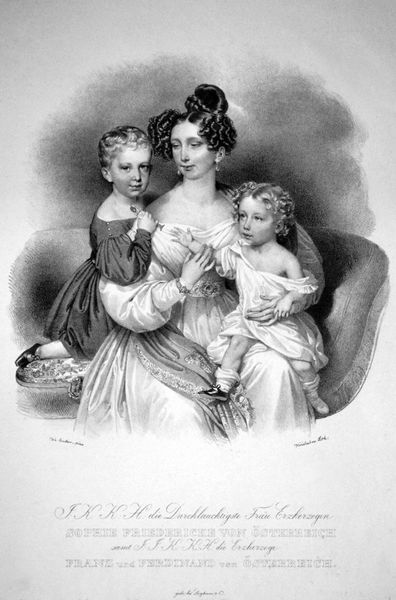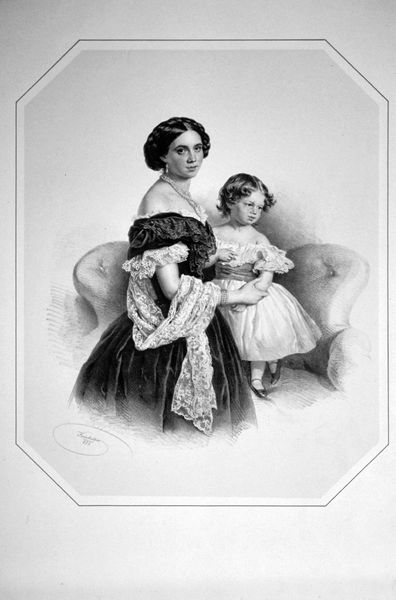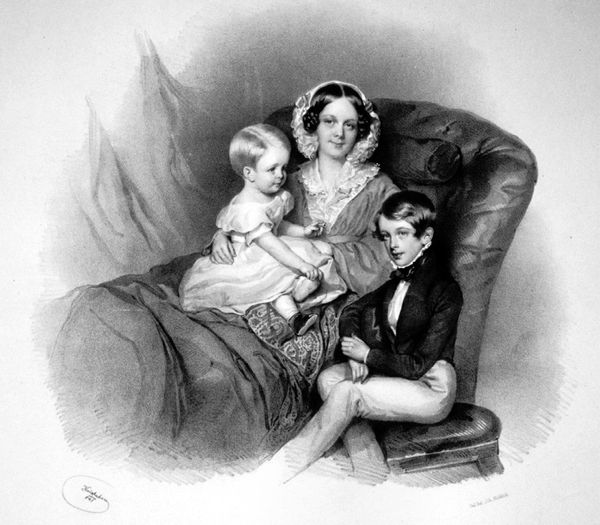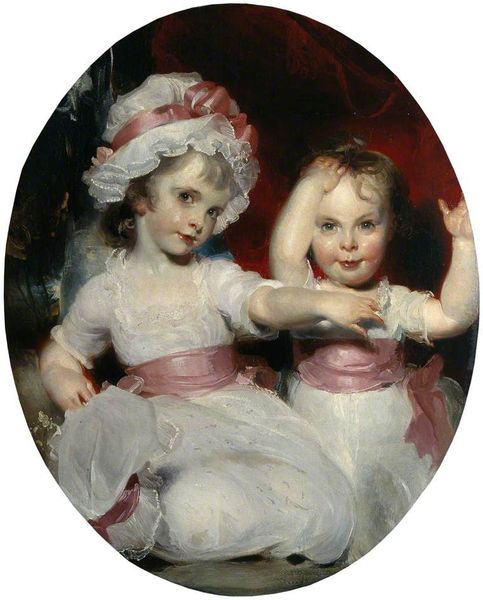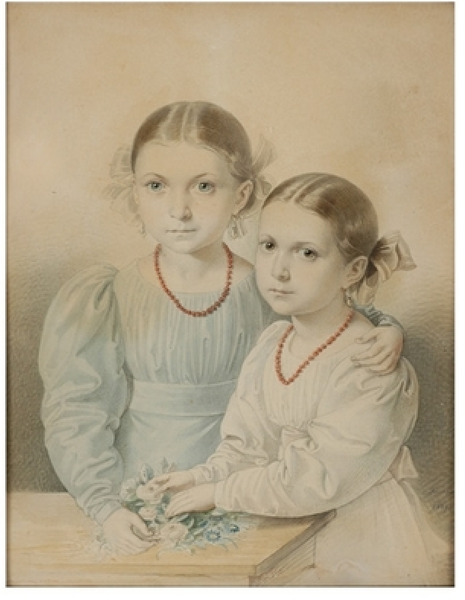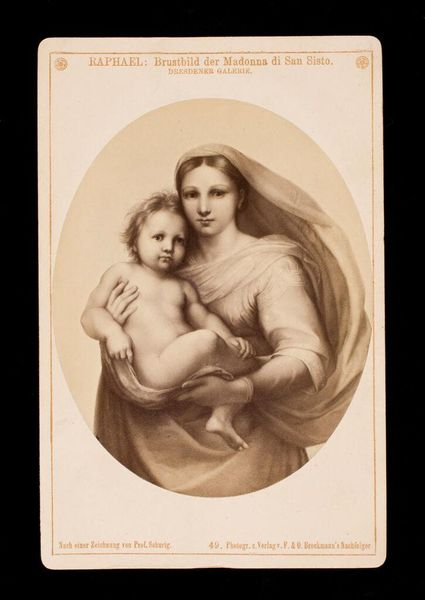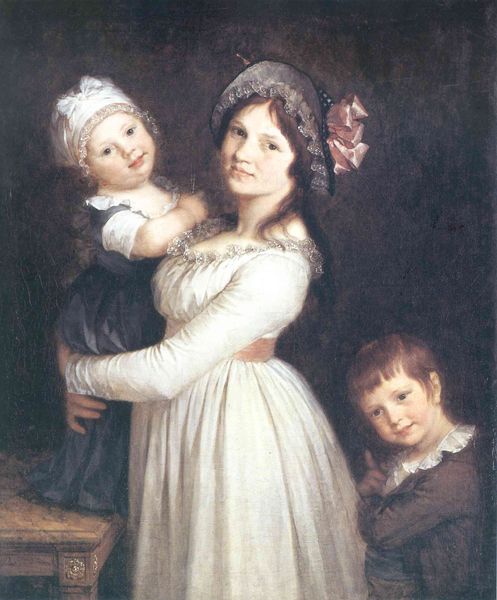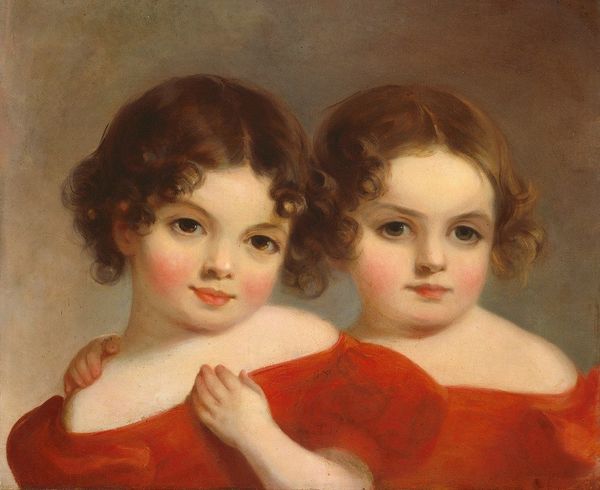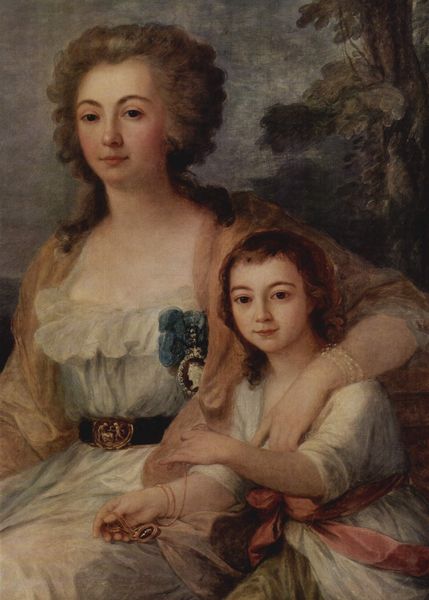
Copyright: Public domain
Curator: What strikes you first about this lithograph, entitled "The Little Sisters," produced by Currier and Ives in 1862? Editor: It’s an immediately sentimental image, bordering on melancholic. The gazes of the girls, particularly the central figure, are so direct. The tonal range in this monochrome artwork is so delicately controlled. Curator: I find it a fascinating reflection of Victorian ideals, capturing the idealized image of childhood, gender roles, and family values so prevalent in that era, in 1862, as Americans find themselves embroiled in Civil War. Currier and Ives were master marketers as well. Editor: Absolutely, these visual signifiers permeate the composition. Note the layering of the children and the interplay of dark and light that sculpts their forms. There’s also the geometry, that slight pyramidal structure that suggests hierarchy and familial closeness, all enhanced with their gazes. Curator: This particular piece catered to a burgeoning middle class eager to display signs of domestic harmony, right? They were marketing to families separated during wartime as well. Prints such as these became common decorations within homes and public spaces of the time, becoming social and political currency, even. Editor: Undoubtedly, prints were key to the circulation of imagery and information. Look, even, at the carefully articulated curls. I think they provide texture, visual interest and an almost tactile quality contrasting sharply against the plain background and clothing. It all contributes to a sense of surface beauty and almost romantic realism. Curator: Indeed, and these visual details reinforce societal expectations surrounding attractiveness and presentation during that period. I am more struck by how these commercial prints shaped, and perhaps even reinforced, class and gender norms, becoming more than mere aesthetic objects within people's homes, no? Editor: A provocative thought! Perhaps my reading too strongly aestheticizes my reading experience. Regardless, these interplay between line, form, and emotion leave one contemplating the composition as a whole. Curator: Perhaps together we have given the listeners an understanding of not just the visual but its historical context as well. Editor: Hopefully providing an entrance point into an appreciation for the complexities, regardless of what voice we lend to it.
Comments
No comments
Be the first to comment and join the conversation on the ultimate creative platform.
